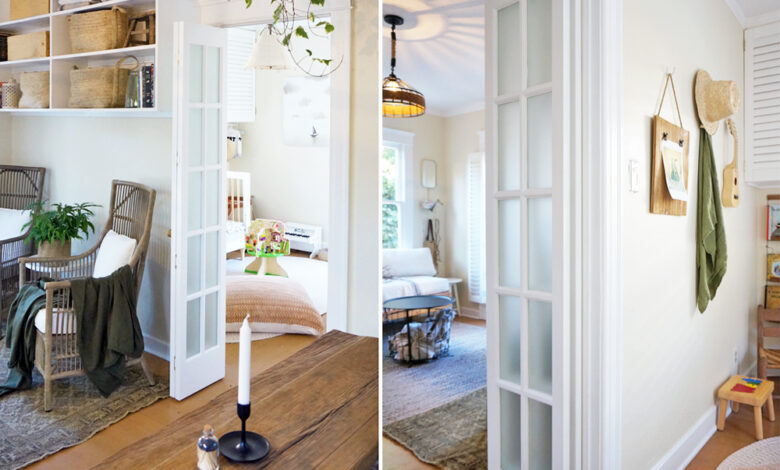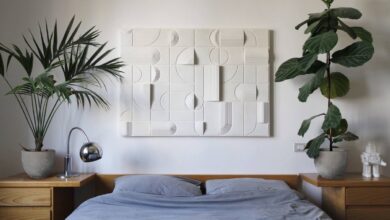How to Maximize Space in Doors Small Spaces

Maximizing space in small spaces requires a combination of strategic planning, efficient organization, and smart design choices.
Briefly introduce the task of dwelling in small spaces and the importance of maximizing every rectangular foot.
Highlight the advantages of efficient space usage, including advanced functionality and luxury.
1. Understanding Your Space
Define what qualifies as a small space (e.G., studio apartments, tiny houses, small rooms).
Discuss common demanding situations related to small areas (e.g., lack of storage, confined floor region).
2. Decluttering and Minimalism
Importance of decluttering to create more physical and visual areas.
Techniques for decluttering efficiently (e.g., Marie Kondo’s approach, minimalist standards).
3. Furniture Selection and Placement
Choosing furnishings that serve more than one function (e.g., couch beds, garage ottomans).
Tips for arranging furniture to maximize space flow and functionality.
Examples of space-saving fixture designs and where to find them.
4. Storage Solutions
Utilizing vertical space with cabinets, wall-mounted organizers, and tall storage units.
Creative garage thoughts for below-applied areas (e.G., under the mattress, above shelves).
DIY storage answers and repurposing items for storage.
5. Organization Systems
Implementing powerful garage systems (e.g., baskets, containers, drawer organizers).
Labeling and categorizing to preserve organization.
Digital corporation suggestions for managing documents and virtual muddle.
6. Maximizing Light and Color
Importance of light and color in small spaces to create a phantasm of area.
Choosing light colorations for walls and furniture to reflect light and make the room feel large.
Strategies for maximizing herbal light and the usage of artificial lighting effectively.
7. Multifunctional Areas and Flexible Design
Designing spaces that serve multiple capabilities (e.g., home office/guest room, eating place/laptop).
Folding and collapsible furnishings options for flexibility.
How to create adaptable areas that can exchange with your desires.
8. Improving Air Circulation and Visual Flow
Tips for enhancing airflow in small areas.
Arranging furnishings to enhance visual drift and create a feel of openness.
Using mirrors and strategic placement of windows to enhance the sensation of the area.
9. Outdoor and Balcony Solutions
Making the maximum of outside areas in residences (e.g., balcony gardens, compact furniture).
Tips for extending dwelling space exterior at some stage in distinct seasons.
10. Case Studies and Real-Life Examples
I am highlighting a hit small space designs and renovations.
Interviews or anecdotes from people who have maximized space in their houses.
Before-and-after modifications to demonstrate effective space-saving techniques.
Summarize the key strategies for maximizing area in small areas.
Reiterate the benefits of efficient space utilization for quality of lifestyles.
Encourage readers to apply those suggestions and adapt them to their particular residing situations.
Benefits of Living in Doors Small Spaces
Briefly introduce the project of living in small spaces and the importance of maximizing each rectangular foot.
Highlight the benefits of efficient space utilization, which include stepped-forward functionality and luxury.
1. Understanding Your Space
Define what qualifies as a small area (e.G., studio flats, tiny homes, small rooms).
Discuss common demanding situations associated with small areas (e.G., loss of garage, limited floor region).
2. Decluttering and Minimalism
Importance of decluttering to create more physical and visible areas.
Techniques for decluttering successfully (e.g., Marie Kondo’s method, minimalist ideas).
3. Furniture Selection and Placement
Choosing fixtures that serve a couple of purposes (e.g., couch beds, storage ottomans).
Tips for arranging fixtures to maximize area float and capability.
Examples of area-saving furniture designs and in which to locate them.
4. Storage Solutions
Utilizing vertical area with shelves, wall-established organizers, and tall storage gadgets.
Creative garage thoughts for below-utilized spaces (e.G., below the mattress, above cabinets).
DIY garage solutions and repurposing objects for storage.
5. Organization Systems
Implementing effective storage structures (e.g., baskets, bins, drawer organizers).
Labeling and categorizing to maintain enterprise.
Digital enterprise guidelines for managing documents and digital muddles.
6. Maximizing Light and Color
Importance of light and shade in small areas to create a phantasm of space.
Choosing light colorations for partitions and furnishings to reflect light and make the room sense large.
Strategies for maximizing herbal mild and using synthetic lighting fixtures efficaciously.
7. Multifunctional Areas and Flexible Design
Designing spaces that serve a couple of features (e.G., domestic workplace/visitor room, eating region/pc).
Folding and collapsible fixtures are alternatives for flexibility.
How to create adaptable spaces which can change along with your desires.
8. Improving Air Circulation and Visual Flow
Tips for boosting airflow in small areas.
Arranging furniture to improve visibility go with the flow and create a sense of openness.
Using mirrors and strategic placement of home windows to beautify the feeling of space.
9. Outdoor and Balcony Solutions
Making the most of outside spaces in flats (e.G., balcony gardens, compact furnishings).
Tips for extending dwelling area exterior at some stage in specific seasons.
10. Case Studies and Real-Life Examples
Highlighting successful small-area designs and renovations.
Interviews or anecdotes from individuals who have maximized space in their homes.
Before-and-after differences to demonstrate effective area-saving strategies.
Living in small spaces offers several blessings which could beautify excellent of life and make contributions definitely to private nicely-being. Here are a few key blessings:
Cost-Effectiveness:
Lower Expenses: Generally, smaller spaces come with lower lease or loan payments, reduced application bills, and decreased protection fees as compared to larger houses.
Minimalist Lifestyle: Living in a smaller area often encourages an extra minimalist method to property, mainly to reduce spending on pointless objects.
Efficient Use of Resources:
Energy Efficiency: Smaller spaces require much less energy for heating, cooling, and lighting, contributing to decreased carbon footprints.
Water Conservation: Reduced water utilization for cleansing and each day activity is normal in smaller homes.
Simplicity and Less Stress:
Less Cleaning and Maintenance: Smaller spaces are less complicated and faster to smooth and preserve, decreasing pressure and allowing more time for leisure or pursuits.
Simplified Living: Fewer belongings and much less space can cause a simplified, more organized lifestyle, reducing intellectual litter and promoting calmness.
Improved Social Connections:
Closer Relationships: Smaller spaces frequently inspire greater frequent interactions with housemates or acquaintances, fostering stronger social bonds.
Community Living: In urban settings, smaller residing areas can encourage engagement with neighborhood communities and services.
Environmental Benefits:
Reduced Environmental Impact: Smaller homes normally have a smaller environmental footprint in terms of substances used for production and ongoing resource consumption.
Creative Design and Personalization:
Creative Challenges: Designing and redecorating a small area can be a fun innovative project, leading to personalized and unique residing environments.
Maximized Functionality: Every inch of a small area may be purposefully designed and applied, improving functionality and comfort.
Location Flexibility:
Urban Living: Small apartments or houses are regularly placed in imperative urban regions, presenting easy access to facilities, places of work, and cultural attractions.
Minimal Commute: Proximity to workplaces or public transportation hubs can lessen trip instances and associated strain.
Financial Freedom and Flexibility:
Savings and Investments: Lower housing costs in small areas can lose up funds for financial savings, investments, or pursuing personal pastimes and pastimes.
Career Flexibility: Reduced financial responsibilities may additionally provide greater flexibility in career choices or pursuing entrepreneurial ventures.
Encourages Conscious Consumption:
Mindful Purchases: Limited space encourages residents to cautiously bear in mind purchases, that specialize in excellent over amount and decreasing needless consumption.
Health and Well-being:
Cozier Atmosphere: Smaller spaces can create a feel of coziness and safety, contributing to advanced intellectual health and well-being.
Active Lifestyle: Limited space may additionally inspire residents to spend more time outdoors or have interaction in network sports, selling physical fitness.
Overall, while living in a small area may require some modifications and innovative solutions, the blessings can be big, offering a greater sustainable, related, and pleasurable lifestyle for plenty of individuals and households.
Final Tips and Resources
Additional resources for additional reading (books, websites, layout blogs).
Quick reference checklist for maximizing space in small spaces.


